Don't have an account? Join for free
For advertising on
Interest to become a seller? Get info
Cart
Completions
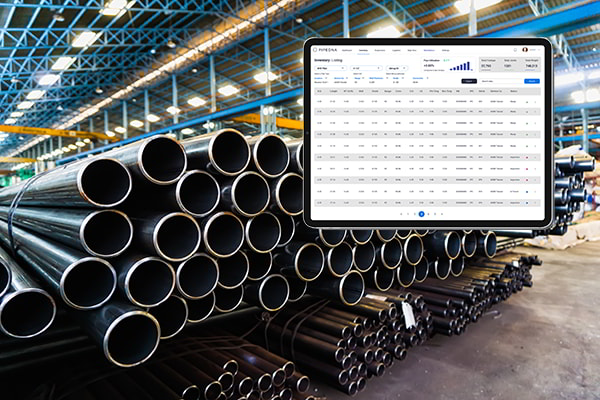
Enhancing Tubular Manufacturing Traceability with PipeDNA: Ensuring Quality and Compliance In the oil and gas industry, maintaining traceability throughout the tubular manufacturing process is crucial for ensuring quality, compliance, and operational efficiency. Introducing PipeDNA, a smart cloud-based platform dedicated to managing pipe and tube throughout the oil and gas supply chain. With its powerful features and innovative technology, PipeDNA empowers stakeholders to proactively manage tubular manufacturing traceability, increase visibility, and optimize their operations for enhanced quality control. Comprehensive Inventory Management and Tracking: PipeDNA offers comprehensive inventory management and tracking capabilities for tubular products, enabling stakeholders to have full visibility into their manufacturing processes. From raw materials to finished products, PipeDNA allows for seamless tracking of each component, ensuring accurate inventory control, reducing waste, and optimizing production planning. Gain insights into utilization, activity, and trends, empowering stakeholders to make data-driven decisions and streamline their manufacturing operations. Streamlined Logistics Management: PipeDNA simplifies logistics management by providing stakeholders with a centralized platform to manage shipments, track status, and document crucial information. Whether it's inbound or outbound logistics, PipeDNA ensures seamless coordination and real-time visibility into the movement of tubular products. The platform also facilitates pipe bundling, allowing stakeholders to optimize transportation and storage, reducing costs and improving overall efficiency. Efficient Inspection Management: With PipeDNA's inspection management feature, stakeholders can effectively manage inspection jobs throughout the tubular manufacturing process. From initial inspections of raw materials to final product inspections, PipeDNA enables tracking and monitoring of job status across multiple sites. By streamlining inspection profiles and documentation, stakeholders can ensure compliance with quality standards, reduce errors, and maintain consistent product quality. Automated Tally Operations: PipeDNA simplifies and automates the tallying process during tubular manufacturing. Stakeholders can create and manage tally operations within the platform, eliminating manual calculations and reducing the risk of errors. By automating pipe tally jobs and workflows, PipeDNA saves time, improves accuracy, and enhances overall manufacturing efficiency. Accurate tally operations enable stakeholders to maintain reliable records and ensure traceability throughout the production cycle. Enhanced Identification and Traceability: PipeDNA's identification and traceability features provide stakeholders with quick and accurate pipe identification, detailed pipe information, activity history, and traceability documentation. By integrating popular barcode standards such as UPC, EAN, and QR codes, PipeDNA enables seamless identification and tracking of each tubular product. This enhanced traceability minimizes the risk of errors, supports efficient recalls if necessary, and ensures compliance with industry regulations. Designed for the Oil and Gas Industry: PipeDNA was designed specifically for stakeholders across drilling, manufacturing, and oilfield services, catering to their unique needs in tubular manufacturing traceability. Whether you are a drilling contractor, oilfield rental company, oilfield and inspection service provider, steel pipe manufacturer, or pipe distribution and storage provider, PipeDNA offers tailored solutions to streamline your tubular manufacturing processes and drive quality and compliance. Leveraging Emerging Technologies: At its core, PipeDNA leverages today's emerging technologies to optimize tubular manufacturing traceability. The platform integrates popular barcode standards such as UPC, EAN, and QR codes, allowing for efficient barcoding and labeling. Furthermore, PipeDNA is RFID ready, supporting the integration of RFID technologies for accurate asset tracking and improved traceability. The platform also enables IoT data integration using the MQTT standard, facilitating fast and reliable sensor data integration for enhanced decision-making during the manufacturing process. PipeDNA revolutionizes tubular manufacturing traceability in the oil and gas industry, providing a smart cloud-based platform that enhances quality control, compliance, and visibility. With its comprehensive inventory management, streamlined logistics operations, efficient inspection management, automated tally operations, and enhanced identification and traceability features, PipeDNA empowers stakeholders to optimize their tubular manufacturing processes, minimize errors, and ensure compliance with industry standards. Leverage the power of PipeDNA and take your tubular manufacturing traceability to new heights of efficiency and reliability. View Details
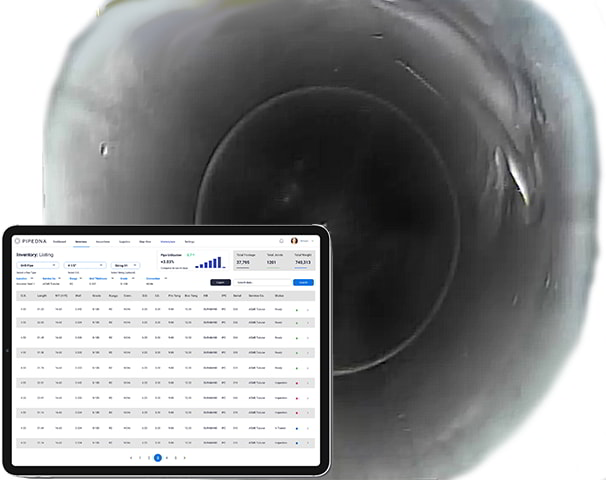
Enhancing Tubular Inspection Management with PipeDNA: Streamlining Quality Assurance in the Oil and Gas Industry In the oil and gas industry, ensuring the quality and integrity of tubular products is of paramount importance. Introducing PipeDNA, a smart cloud-based platform dedicated to managing pipe and tube throughout the oil and gas supply chain. With its powerful features and innovative technology, PipeDNA empowers stakeholders to effectively manage and streamline tubular inspection processes, enabling enhanced quality assurance and compliance. Efficient Management of Inspection Jobs: PipeDNA provides a comprehensive solution for managing inspection jobs across multiple sites. Stakeholders can easily create and track inspection jobs, monitor their status, and manage inspection profiles within the platform. This streamlined approach eliminates manual and time-consuming processes, ensuring efficient coordination and effective allocation of inspection resources. Real-time Job Status and Reporting: With PipeDNA, stakeholders can access real-time updates on the status of inspection jobs. The platform enables instant communication and collaboration between inspectors, supervisors, and other relevant parties involved in the inspection process. By providing a centralized hub for reporting and documentation, PipeDNA enhances transparency and allows for swift decision-making based on accurate and up-to-date information. Tailored Inspection Profiles: PipeDNA allows stakeholders to create and manage inspection profiles specific to their tubular products. Customizable inspection profiles enable stakeholders to define the required tests, measurements, and criteria for each type of tubular product. By tailoring inspection profiles to their unique needs, stakeholders can ensure adherence to industry standards and regulatory requirements, ultimately guaranteeing the quality and safety of their tubular assets. Seamless Integration of Inspection Data: PipeDNA offers seamless integration of inspection data, eliminating the need for manual data entry and reducing the risk of human errors. The platform allows for the integration of manufacturing data, ensuring that inspection results are directly linked to the production process. By automating the transfer of data, PipeDNA enables stakeholders to maintain accurate and reliable records, enhancing traceability and facilitating data-driven decision-making. Enhanced Identification and Traceability: PipeDNA's identification and traceability features provide stakeholders with quick and accurate pipe identification, detailed pipe information, activity history, and traceability documentation. By integrating popular barcode standards such as UPC, EAN, and QR codes, PipeDNA enables seamless identification and tracking of each tubular product. This enhanced traceability minimizes the risk of errors, supports efficient recalls if necessary, and ensures compliance with industry regulations. Leveraging Emerging Technologies: PipeDNA leverages today's emerging technologies to optimize tubular inspection management. The platform supports barcoding and labeling systems, integrating popular barcode standards for efficient identification and tracking. PipeDNA is RFID ready, allowing for integration with RFID technologies such as labels and asset tags, further enhancing asset tracking and traceability. Additionally, PipeDNA supports IoT data integrations using the MQTT standard, enabling fast and reliable sensor data integration for enhanced inspection processes. PipeDNA revolutionizes tubular inspection management in the oil and gas industry, providing a smart cloud-based platform that streamlines quality assurance processes. By offering efficient management of inspection jobs, real-time status updates, tailored inspection profiles, seamless data integration, and enhanced identification and traceability, PipeDNA empowers stakeholders to ensure the highest level of quality and compliance in their tubular assets. Embrace PipeDNA and elevate your tubular inspection management to new levels of efficiency and reliability. View Details
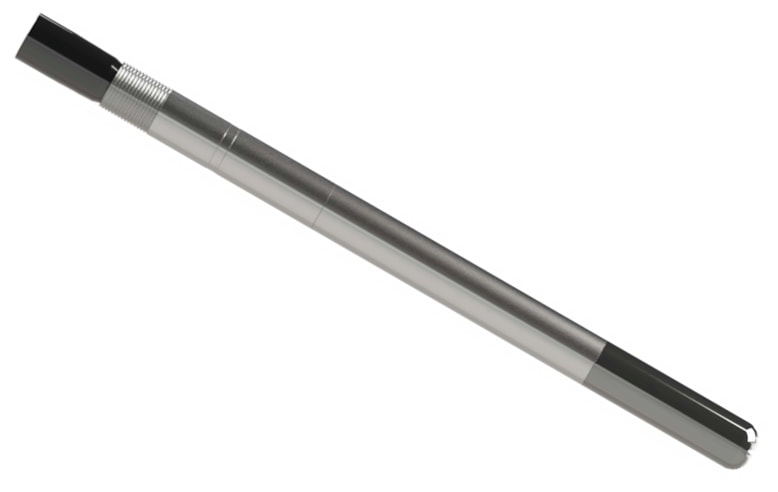
Introducing the BPX-SPAN, the elastomer-free bridge plug designed to withstand even the toughest well conditions. With the use of our patented metal to metal X-SPAN seal technology, the BPX-SPAN provides a mechanical seal and anchor to the casing wall, making it a great solution for wells that cause elastomers to swell on standard bridge plugs while running in the hole. The BPX-SPAN has a short design for quick removal and is capable of setting in any grade casing, including P-110. It also boasts a range of optional equipment, including a ceramic knock out sub, pump out sub, burst disc, tailpipe assembly with profile subs, and a velocity string, making it a versatile system for any well application. Unlike standard bridge plugs that can have exposed elastomers to create a seal to the casing wall, the BPX-SPAN's sealing element utilizes a metal to metal seal that bonds and seals to the casing wall, ensuring a reliable seal that won't fail during run-in and setting. With no moving parts, slips, shear screws, or set screws, you can trust the BPX-SPAN to provide a long-lasting solution for temporary or permanent service. Please note that for bridge plug applications, our published pressure ratings may not apply to the system, as those ratings are based on collapse and burst pressure ratings. However, with a rating of over 550°F, you can trust the BPX-SPAN to withstand even the harshest well conditions. If you have any questions about the BPX-SPAN or any other ID OILTOOLS system, please contact our Tech Services department for assistance. Choose the BPX-SPAN for a reliable, elastomer-free solution for all your well application needs. View Details
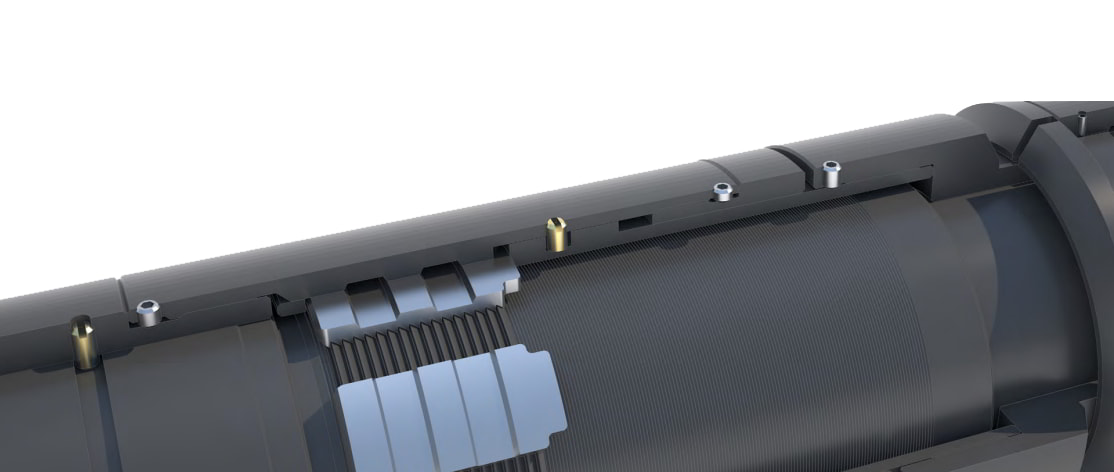
Introducing the V0 retrievable bridge plug from ID Oil Tools, the ultimate solution for temporary wellbore isolation, zonal isolation, and downhole check valves. The V0 plug can be deployed using slickline, e-line or coiled tubing, and can be set using conventional industry standard setting tools and associated interface connections. What sets the V0 plug apart from the rest is its ease of removal. Simply use a standard GS Pulling tool with prong to equalize and remove the plug. Plus, it has been tested and certified according to ISO14310 V0 (Gas tight) standards, ensuring its reliability and durability. The V0 plug also offers versatility with its elastomers that can work in temperatures up to 150°C. This makes it the perfect solution for suspending instrumentation such as pressure and temperature memory gauges. Choose the V0 retrievable bridge plug from ID Oil Tools for all your wellbore isolation and zonal isolation needs. View Details
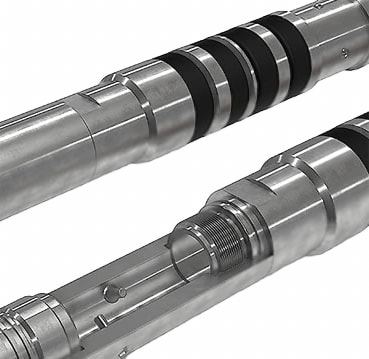
Looking for a reliable and high-quality retrievable bridge plug for your completion needs? Look no further than ID OilTools' QUP Plug System! Our QUP Plug System is specifically designed to provide pressure control or tubing anchoring in completions where nipple profiles are either damaged or not available. This means that our plug can be used in a variety of applications, including wellbore isolation, straddle systems, instrumentation suspension, artificial lift systems, orifice downhole chokes, downhole check valves, and pump open subs. The QUP plug can be easily conveyed to depth on standard electric line setting tools or on hydraulic setting tools for use with coiled tubing. Retrieval of the plug is just as easy, using a standard GS-pulling tool and standard retrieval procedures. Plus, our patented releasing mechanism makes it easy to fit a variety of equalizing or pump through-subs on the bottom of the plug. But the benefits of our QUP Plug System don't stop there! Our plug system boasts a number of additional features and capabilities, including a slip-lock design, equalizing assembly options, and elements built to NACE MR0175 specifications. Plus, our proprietary HSN and Fluoroelastomer elements ensure that our plug system can withstand even the harshest conditions, with a maximized thru bore for maximum production. So if you're in need of a reliable, high-quality retrievable bridge plug, look no further than ID OilTools' QUP Plug System. Contact us today to learn more! View Details
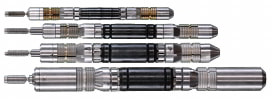
Are you in need of a high-quality, dependable bridge plug that can be deployed in small-bore conditions? Look no further than ID OilTools' Permanent Miniature Bridge Plug (PMBP)! Our PMBP system is specially designed to mechanically convert external pressure into additional sealing force, using metal grippers to withstand differential pressures of up to 7,500 PSI at 350°F with HSN elements (with other element options available upon request, such as Viton or Aflas). Our PMBPs boast a number of features that make them the ideal choice for pressure control in the 3/4" (19.05mm) to 1.75" (44mm) setting range. With a small O.D., they can be easily run in tubing with size restrictions like coiled tubing, while still forming a fluid tight seal against the tubing wall. Plus, all of our miniature bridge plugs have a pump-through check-valve option. But the benefits of our PMBPs don't stop there! They can be used in a variety of applications, including pressure control for snubbing operations, as a mechanical barrier to replace failed downhole equipment, as a mechanical barrier for coil tubing/velocity string retrieval, and for coil tubing cleanout using its pump-through feature for nitrogen purges. If you're in need of a high-quality, dependable bridge plug for small-bore conditions, look no further than ID OilTools' Permanent Miniature Bridge Plug. Contact us today to learn more about our PMBPs and how they can benefit your operation! View Details
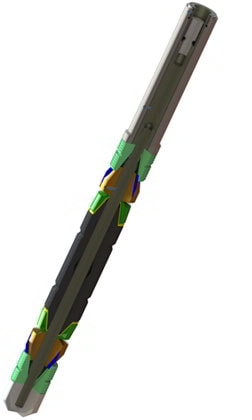
Introducing the Magna Range Bridge Plug from ID OilTools – the ultimate solution to passing restrictions and securely setting in larger tubing or casing. Our plug has been specially designed to handle differential pressures of up to 10,000psi at 350°F, making it the perfect choice for your downhole operations. Due to the extended setting range this plug has no pressure rating and as such the differential pressures are not guaranteed, even though the plug has passed several tests in these conditions. What sets our plug apart is its extended setting range, which allows it to pass through restricted I.D. tubing, saving you valuable time and money. With case-hardened slips above and below a three-piece nitrile rubber pack-off system, our plug is designed to maintain a constant sealing pressure. The slips are specially heat-treated to ensure a secure anchoring even in P-110 casing, with a hard outer layer for gripping and a soft inner layer for easier milling. To ensure centered setting of the small diameter plug in large I.D. pipe, our Magna Range Plug features ribbed cones that direct the slips to evenly spaced positions against the pipe. And should it be necessary to remove the plug after setting, a milling process is recommended as the plug is constructed of mild steel and is not considered drillable. Don't compromise on quality and reliability when it comes to your downhole operations. Choose the Magna Range Bridge Plug from ID OilTools, and experience the ultimate in performance and efficiency. View Details
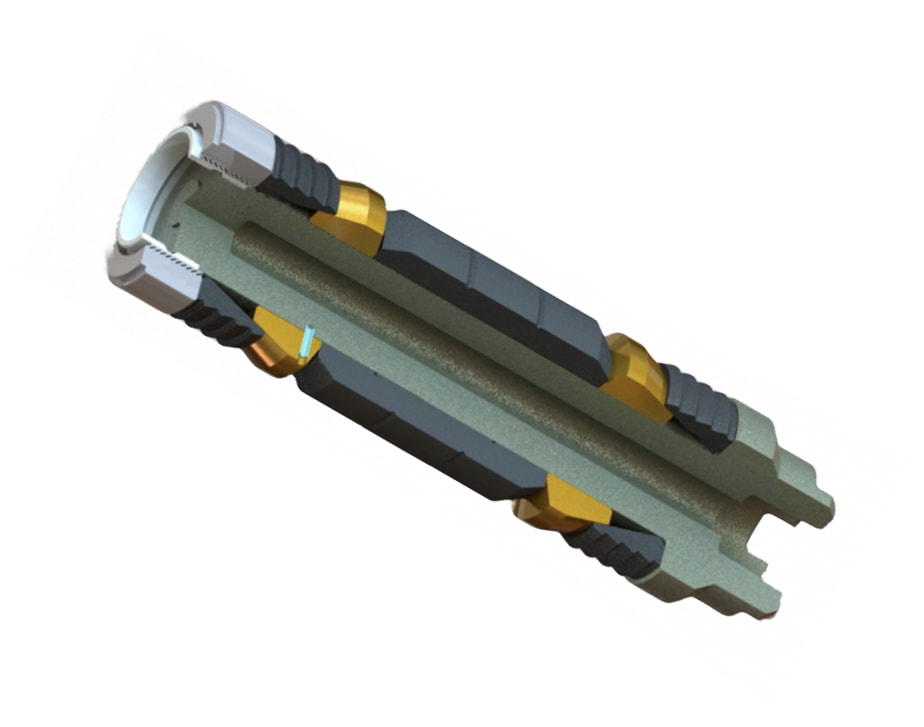
Introducing the ID Oiltools Premium Bridge Plug - the ultimate solution for your plug and abandonment needs! Our premium bridge plug is designed to withstand large pressure differentials and elevated temperatures of up to 10,000psi/350°F, ensuring a secure and permanent set in either tubing or casing. Constructed with cast iron, the premium bridge plug can be easily removed by means of drilling or milling operations if required. It can be set using conventional wireline pressure setting tools and adapter-kits are available to suit either a Baker E-4 or a GO setting tool interface. Our Premium Bridge Plug Wireline Set/Drillable is versatile and can set in any grade casing, including P-110. It is rated to 10,000 psi at 275°F (350°F with VITON), making it an ideal choice for extra high pressure and rapid drill-out scenarios. Rest assured that our premium bridge plug is designed for reliability and performance, with an electric wireline set that guarantees a secure and permanent set. Don't let pressure differentials and elevated temperatures hold you back. Choose the ID Oiltools Premium Bridge Plug for a secure and reliable solution. View Details
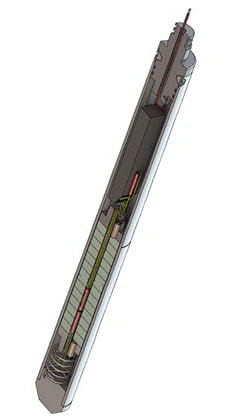
Introducing ID Oiltools' Drill Collar Severing Tools - the reliable and safe solution for Pipe Recovery Operations. Our Drill Collar Severing Tools utilize Explosive Bridge-Wires to simultaneously detonate columns, creating a shock wave collision that severs the tubular with precision. Our tool provides a quick and effective solution to sever heavyweight drill pipe and drill collars, and is designed to conform to API RP-67 for maximum safety. With air shippable detonators and hardware shipped separately, our Drill Collar Severing Tools are the ultimate in convenience and efficiency. Our patented Explosive Bridge-Wire Detonators increase the precision of the colliding shock-waves for maximum performance, making it the tool of choice for stuck pipe or plug and abandonment (P & A) operations. Choose the tool with the largest possible diameter capable of running in the stuck pipe for maximum results. Tension should be applied to the tubing prior to detonation of the Severing Tool to assist in the removal of stuck tubulars. Trust ID Oiltools to provide the safe, efficient, and reliable solution for all your Pipe Recovery Operations. View Details
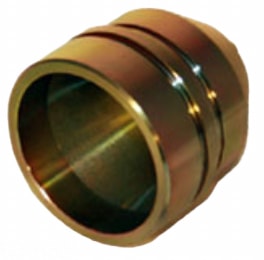
ID OILTOOLS is proud to offer the cutting-edge HERO-HR™, SUPER HERO®, and HERO® charges from Owens, which feature advanced, patented technology that yields numerous benefits for perforating operations. With the addition of tungsten in shape charges years ago, debris was an undesirable byproduct that reduced the effectiveness of the perforation tunnel volume. Owens' patented liner material eliminates this issue by using molybdenum and an improved geometry to prevent spent tungsten from becoming a solid. The result is a clean perforation tunnel that reduces frac breakdown pressures and improves flow efficiency, making the HERO® line of Gun Systems an industry leader. The HERO® Line of Perforating Gun Systems is designed with the latest 'New Technology' developed by Owens Oil Tools, certified under new API RP 19B Standards. Owens' Perforating Gun Systems are available in various sizes and types, ensuring a perfect match for any completion design and formation demands. ID OILTOOLS is proud to offer HERO® charges to our customers, ensuring maximum penetration and flow efficiency while reducing the debris typically associated with high-density liner materials. Trust ID OILTOOLS to provide you with the best-performing, most effective perforating solutions on the market. View Details
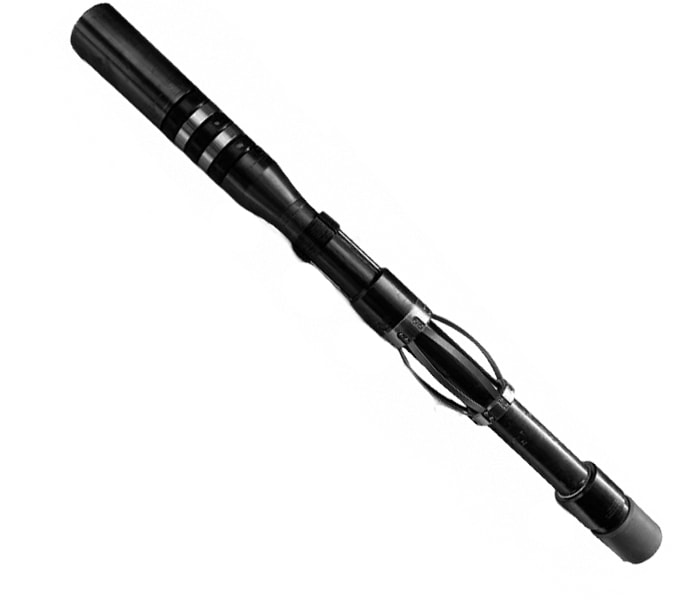
ID Oiltools heavyweight velocity string handoff packers are able to handle the heaviest loads from velocity strings. For applications of extreme string lengths or heavy weight pipe, the ID Oiltools heavy weight velocity string packer is the most robust tool for the job. Contact us today to find out more! View Details
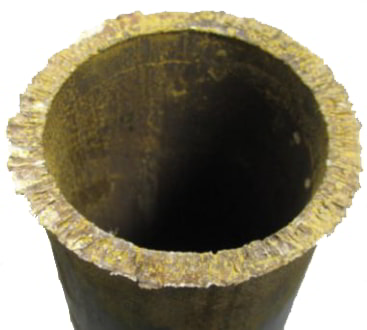
Introducing Tubing Cutter / Drill Pipe Cutters from ID Oiltools - the perfect solution to quickly and effectively sever tubing during the removal of stuck pipe. Our Tubing Cutters are designed to handle the toughest situations when tubing becomes stuck in the well. To achieve maximum performance, we recommend choosing the cutter with the largest possible diameter that can run in the well. Our Tubing Cutter / Drill Pipe Cutters are air shippable at Class 1.4D and conform to API RP-67, ensuring that you receive a reliable and safe product. To maximize the effectiveness of the tool, our cutters should be centralized and run in recommended applications. Don't let stuck tubing slow down your operations - trust ID Oiltools Tubing Cutter / Drill Pipe Cutters to provide a quick and efficient solution. Contact us today to learn more about how we can help you overcome the toughest challenges in your well operations. View Details
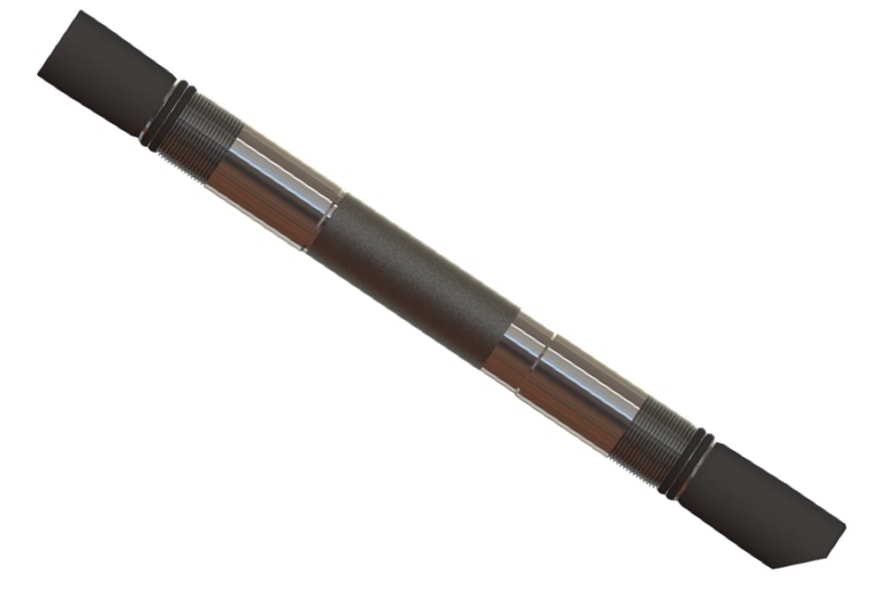
Looking for a heavy-duty, permanent solution for sealing splits, holes or perforations in your tubing and casing? Look no further than the GTX-SPAN System Tubing/Casing Patch from ID OILTOOLS! Our GTX-SPAN System is the first effective gas tight patch on the market, thanks to the premium sealing elements in each component. Each element contains two elastomer seals, providing superior gas shut off capabilities. The GTX-SPAN System is incredibly versatile, and can be run on electric wireline, tubing, or coil tubing, and set with a pressure setting tool (electrical, mechanical, or hydraulic). The large bores ensure easy passage of tools and equipment, minimizing restriction to fluid flow. Customizable for most well applications, including premium alloys, restrictions, and geothermal well applications, our GTX-SPAN System Tubing/Casing Patch is the solution you need for your sealing needs. Our system consists of three basic components: a top metal element with an expandable elastomer seal, a tubular extension, and a bottom metal element with an expandable elastomer seal. Various patch lengths can be obtained by adding tubular extensions, making it a modular and versatile solution for any well. During the setting process, the pressure setting tool exerts a pushing force on the top tapered metal swage and a pulling force on the bottom tapered metal swage. Both swages are driven into the metal sealing elements (with expandable elastomer seals), which expand outward into the casing wall, providing both a metal-to-metal and an elastomer seal. At a predetermined force, a calibrated weak point shears, and the setting process ceases. A collapsible setting collet located in the bottom swage retracts and allows the setting equipment to be retrieved. The interval is now fully isolated with metal and expandable elastomer seals. ID OILTOOLS highly recommends the use of a casing scraper before patch installation to rid the interval of foreign matter and the use of a casing caliper to provide an accurate record of casing I.D. and conditions. A gauge ring or drift run is a minimum requirement. Choose the GTX-SPAN System Tubing/Casing Patch from ID OILTOOLS for the first effective gas tight patch on the market. Contact us today to learn more! View Details
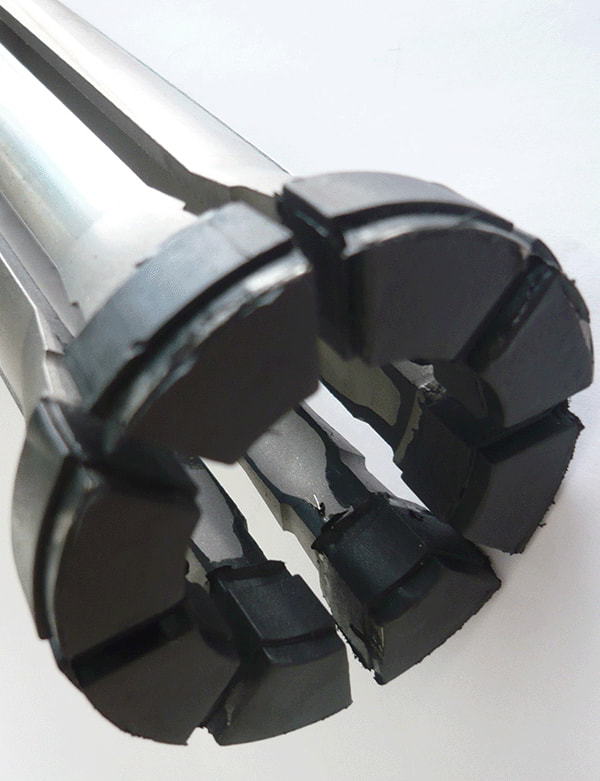
Introducing the Rod Sentinel. Sivam has designed and patented the first fail safe, surface controlled subsurface safety valve for sucker rod application called rod sentinel - an innovative technology that changes the game in dual barrier policy of the oil and gas market. This Sivam safety valve can be applied in all sucker rod completed wells where it is necessary to comply with the dual barrier policy. The Rod Sentinel SCSSSV can be installed in landing nipple for 2.81 inches surface controlled wireline retrievable insert valves with standard profiles. The Rod Sentinel SCSSSV lock mandrel has been designed to be installed and retrieved by the sucker rod string in combination with the pump plunger so it completely avoids the cost and risk of a workover. The beam pump safety valve was designed in compliance with the fail-safe concept. Control line pressure keeps the valve open and when the pressure fails the preloaded power spring in the valve pushes the sealing pads within the cone housing and the valve closes using the same hydraulic control line technology as a conventional SCSSSV. View Details
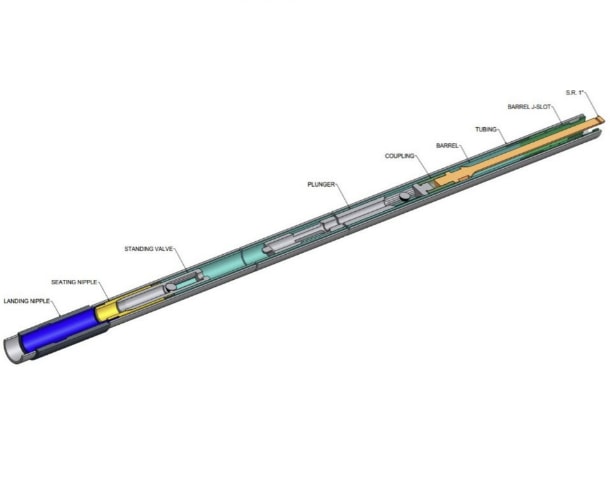
The Sivam Hybrid Downhole Pump is a rod pump that utilises the existing tubing as the pump barrel. The standing valve is installed first in a tubing profile, and the travelling assembly is then installed. Dual barrier options such as the Rod Sentinel can also be installed and recovered using the Hybrid Downhole pump. The Hybrid Downhole Pump increases fluid production by maximizing rod pump barrel size, and installation costs are minimised by being through-tubing installable. An excellent choice for well testing existing completions that do not have artificial lift installed. When used in conjunction with the Rod Sentinel SCSSV the Hybrid Downhole Pump is capable of dewatering gas wells, rod pumping critical sour wells, or for installation on lower rate offshore wells. View Details
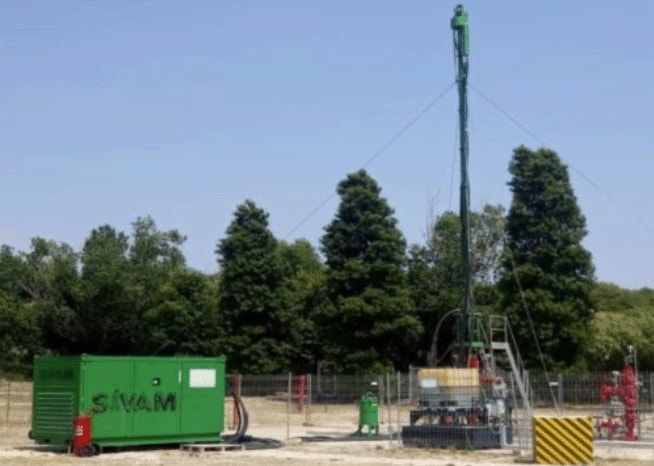
In the last few years, thanks to intense engineering studies, Sivam has designed and manufactured the Long Stroke Hydraulic Pumping Unit to maximize the efficient recovery of oil from wells completed with sucker rods. One of the main advantages of the Long Stroke Hydraulic Pumping Unit compared to a conventional Beam Pump is the longer stroke length results in less pump cycles per barrel resulting in higher pump efficiency and less wear and tear on the downhole components. Installation of the Long Stroke Hydraulic Pumping Unit is quick and simple. Installation averages just 3 hours and civil work is not required. The light weight of the unit (under 3 tonnes) and small footprint (it is mounted on the X-mas Tree) provides a artificial lift pumping unit that can be used in well testing or offshore platform applications (dual barrier policy can be achieved when used in conjunction with our rod sentinel SCSSSV). View Details
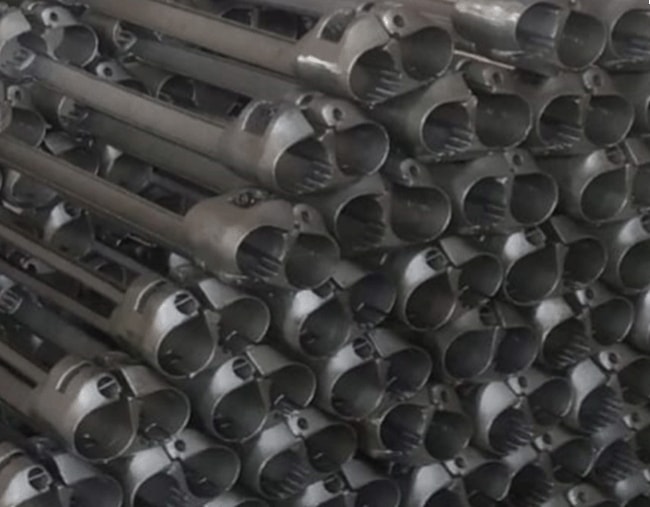
Cross coupling protectors are essential tools used in the oil and gas industry during the installation of completions in oil and gas wells. These protectors provide a variety of benefits that make them a necessary investment for any oil and gas company. Protects Control Lines: Cross coupling protectors help protect control lines from damage that can be caused by the installation process, environmental factors, and other external factors. By providing an extra layer of protection, the control line can last longer and reduce the need for costly repairs or replacements. Prevents Fluid Contamination in Cables: Cross coupling protectors prevent fluid contamination by keeping debris and other unwanted materials out of electrical cables during installation. This is particularly important in the oil and gas industry where contamination can lead to significant safety risks, equipment damage, and production losses. Reduces Maintenance Costs: The installation of cross coupling protectors can help reduce maintenance costs. By protecting control lines and cables the completion is less likely to require maintenance or repair. This can result in significant cost savings over the long-term. Improves Efficiency: Cross coupling protectors help to improve the efficiency of the installation process. By providing a secure connection and preventing contamination, the installation process can be completed more quickly and with fewer re-work. This can help to reduce downtime and increase productivity. Enhances Safety: Cross coupling protectors enhance safety by reducing the risk of equipment failure and fluid contamination. This can help to prevent accidents and injuries, and ensure that the installation process is completed safely. The use of cross coupling protectors is critical to the successful installation of tubing in oil wells. They provide numerous benefits including protecting tubing joints, preventing fluid contamination, reducing maintenance costs, improving efficiency, and enhancing safety. By investing in cross coupling protectors, oil and gas operators can ensure the long-term success of their operations while improving their bottom line. View Details
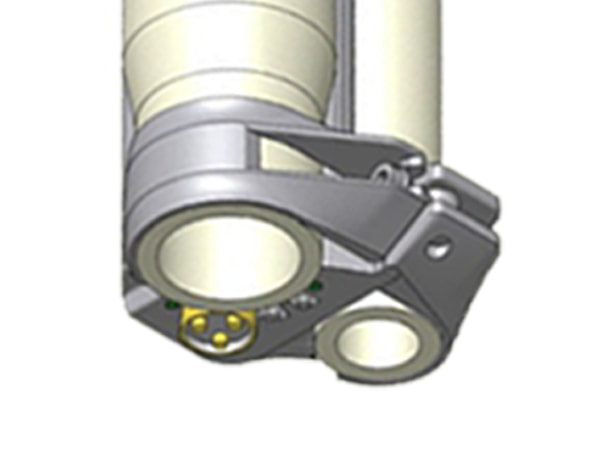
Cross coupling protectors are essential tools used in the oil and gas industry during the installation of completions in oil and gas wells. These protectors provide a variety of benefits that make them a necessary investment for any oil and gas company. Protects Control Lines: Cross coupling protectors help protect control lines from damage that can be caused by the installation process, environmental factors, and other external factors. By providing an extra layer of protection, the control line can last longer and reduce the need for costly repairs or replacements. Prevents Fluid Contamination in Cables: Cross coupling protectors prevent fluid contamination by keeping debris and other unwanted materials out of electrical cables during installation. This is particularly important in the oil and gas industry where contamination can lead to significant safety risks, equipment damage, and production losses. Reduces Maintenance Costs: The installation of cross coupling protectors can help reduce maintenance costs. By protecting control lines and cables the completion is less likely to require maintenance or repair. This can result in significant cost savings over the long-term. Improves Efficiency: Cross coupling protectors help to improve the efficiency of the installation process. By providing a secure connection and preventing contamination, the installation process can be completed more quickly and with fewer re-work. This can help to reduce downtime and increase productivity. Enhances Safety: Cross coupling protectors enhance safety by reducing the risk of equipment failure and fluid contamination. This can help to prevent accidents and injuries, and ensure that the installation process is completed safely. The use of cross coupling protectors is critical to the successful installation of tubing in oil wells. They provide numerous benefits including protecting tubing joints, preventing fluid contamination, reducing maintenance costs, improving efficiency, and enhancing safety. By investing in cross coupling protectors, oil and gas operators can ensure the long-term success of their operations while improving their bottom line. View Details
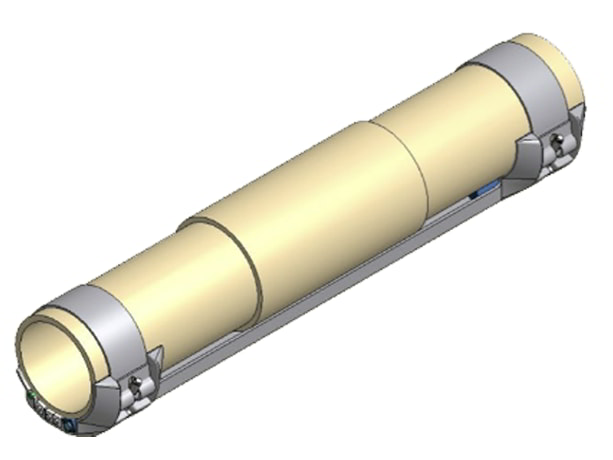
Cross coupling protectors are essential tools used in the oil and gas industry during the installation of completions in oil and gas wells. These protectors provide a variety of benefits that make them a necessary investment for any oil and gas company. Protects Control Lines: Cross coupling protectors help protect control lines from damage that can be caused by the installation process, environmental factors, and other external factors. By providing an extra layer of protection, the control line can last longer and reduce the need for costly repairs or replacements. Prevents Fluid Contamination in Cables: Cross coupling protectors prevent fluid contamination by keeping debris and other unwanted materials out of electrical cables during installation. This is particularly important in the oil and gas industry where contamination can lead to significant safety risks, equipment damage, and production losses. Reduces Maintenance Costs: The installation of cross coupling protectors can help reduce maintenance costs. By protecting control lines and cables the completion is less likely to require maintenance or repair. This can result in significant cost savings over the long-term. Improves Efficiency: Cross coupling protectors help to improve the efficiency of the installation process. By providing a secure connection and preventing contamination, the installation process can be completed more quickly and with fewer re-work. This can help to reduce downtime and increase productivity. Enhances Safety: Cross coupling protectors enhance safety by reducing the risk of equipment failure and fluid contamination. This can help to prevent accidents and injuries, and ensure that the installation process is completed safely. The use of cross coupling protectors is critical to the successful installation of tubing in oil wells. They provide numerous benefits including protecting tubing joints, preventing fluid contamination, reducing maintenance costs, improving efficiency, and enhancing safety. By investing in cross coupling protectors, oil and gas operators can ensure the long-term success of their operations while improving their bottom line. View Details
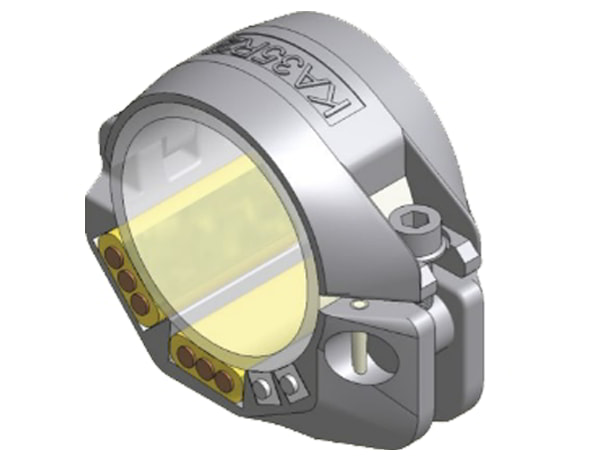
Cross coupling protectors are essential tools used in the oil and gas industry during the installation of completions in oil and gas wells. These protectors provide a variety of benefits that make them a necessary investment for any oil and gas company. Protects Control Lines: Cross coupling protectors help protect control lines from damage that can be caused by the installation process, environmental factors, and other external factors. By providing an extra layer of protection, the control line can last longer and reduce the need for costly repairs or replacements. Prevents Fluid Contamination in Cables: Cross coupling protectors prevent fluid contamination by keeping debris and other unwanted materials out of electrical cables during installation. This is particularly important in the oil and gas industry where contamination can lead to significant safety risks, equipment damage, and production losses. Reduces Maintenance Costs: The installation of cross coupling protectors can help reduce maintenance costs. By protecting control lines and cables the completion is less likely to require maintenance or repair. This can result in significant cost savings over the long-term. Improves Efficiency: Cross coupling protectors help to improve the efficiency of the installation process. By providing a secure connection and preventing contamination, the installation process can be completed more quickly and with fewer re-work. This can help to reduce downtime and increase productivity. Enhances Safety: Cross coupling protectors enhance safety by reducing the risk of equipment failure and fluid contamination. This can help to prevent accidents and injuries, and ensure that the installation process is completed safely. The use of cross coupling protectors is critical to the successful installation of tubing in oil wells. They provide numerous benefits including protecting tubing joints, preventing fluid contamination, reducing maintenance costs, improving efficiency, and enhancing safety. By investing in cross coupling protectors, oil and gas operators can ensure the long-term success of their operations while improving their bottom line. View Details
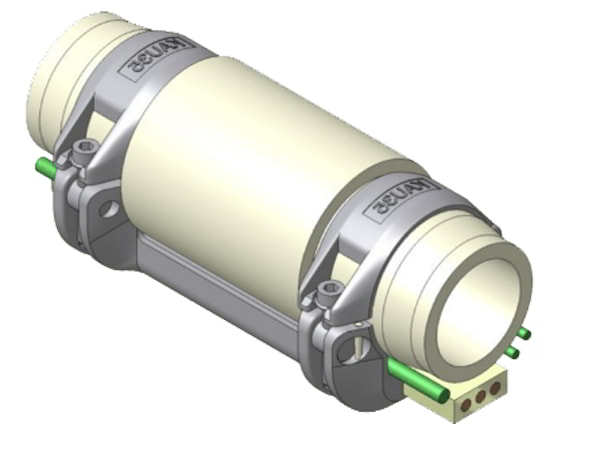
Cross coupling protectors are essential tools used in the oil and gas industry during the installation of completions in oil and gas wells. These protectors provide a variety of benefits that make them a necessary investment for any oil and gas company. Protects Control Lines: Cross coupling protectors help protect control lines from damage that can be caused by the installation process, environmental factors, and other external factors. By providing an extra layer of protection, the control line can last longer and reduce the need for costly repairs or replacements. Prevents Fluid Contamination in Cables: Cross coupling protectors prevent fluid contamination by keeping debris and other unwanted materials out of electrical cables during installation. This is particularly important in the oil and gas industry where contamination can lead to significant safety risks, equipment damage, and production losses. Reduces Maintenance Costs: The installation of cross coupling protectors can help reduce maintenance costs. By protecting control lines and cables the completion is less likely to require maintenance or repair. This can result in significant cost savings over the long-term. Improves Efficiency: Cross coupling protectors help to improve the efficiency of the installation process. By providing a secure connection and preventing contamination, the installation process can be completed more quickly and with fewer re-work. This can help to reduce downtime and increase productivity. Enhances Safety: Cross coupling protectors enhance safety by reducing the risk of equipment failure and fluid contamination. This can help to prevent accidents and injuries, and ensure that the installation process is completed safely. The use of cross coupling protectors is critical to the successful installation of tubing in oil wells. They provide numerous benefits including protecting tubing joints, preventing fluid contamination, reducing maintenance costs, improving efficiency, and enhancing safety. By investing in cross coupling protectors, oil and gas operators can ensure the long-term success of their operations while improving their bottom line. View Details
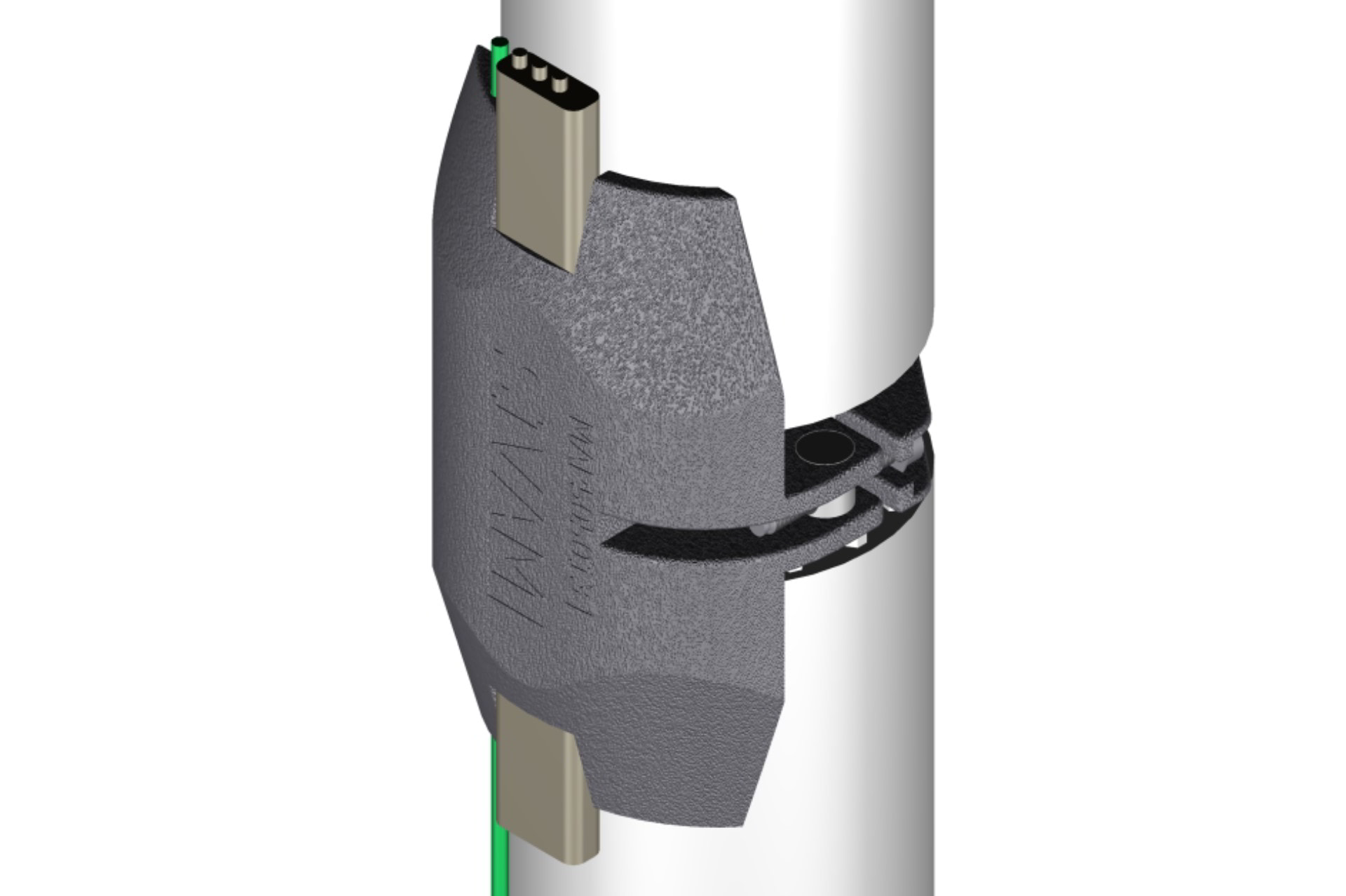
Cross coupling protectors are essential tools used in the oil and gas industry during the installation of completions in oil and gas wells. These protectors provide a variety of benefits that make them a necessary investment for any oil and gas company. Protects Control Lines: Cross coupling protectors help protect control lines from damage that can be caused by the installation process, environmental factors, and other external factors. By providing an extra layer of protection, the control line can last longer and reduce the need for costly repairs or replacements. Prevents Fluid Contamination in Cables: Cross coupling protectors prevent fluid contamination by keeping debris and other unwanted materials out of electrical cables during installation. This is particularly important in the oil and gas industry where contamination can lead to significant safety risks, equipment damage, and production losses. Reduces Maintenance Costs: The installation of cross coupling protectors can help reduce maintenance costs. By protecting control lines and cables the completion is less likely to require maintenance or repair. This can result in significant cost savings over the long-term. Improves Efficiency: Cross coupling protectors help to improve the efficiency of the installation process. By providing a secure connection and preventing contamination, the installation process can be completed more quickly and with fewer re-work. This can help to reduce downtime and increase productivity. Enhances Safety: Cross coupling protectors enhance safety by reducing the risk of equipment failure and fluid contamination. This can help to prevent accidents and injuries, and ensure that the installation process is completed safely. The use of cross coupling protectors is critical to the successful installation of tubing in oil wells. They provide numerous benefits including protecting tubing joints, preventing fluid contamination, reducing maintenance costs, improving efficiency, and enhancing safety. By investing in cross coupling protectors, oil and gas operators can ensure the long-term success of their operations while improving their bottom line. View Details
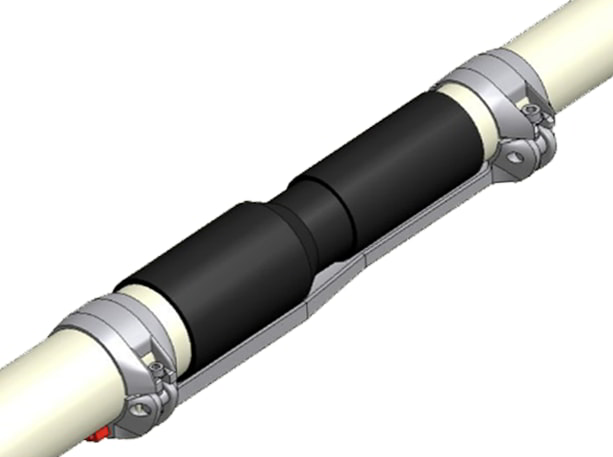
Cross coupling protectors are essential tools used in the oil and gas industry during the installation of completions in oil and gas wells. These protectors provide a variety of benefits that make them a necessary investment for any oil and gas company. Protects Control Lines: Cross coupling protectors help protect control lines from damage that can be caused by the installation process, environmental factors, and other external factors. By providing an extra layer of protection, the control line can last longer and reduce the need for costly repairs or replacements. Prevents Fluid Contamination in Cables: Cross coupling protectors prevent fluid contamination by keeping debris and other unwanted materials out of electrical cables during installation. This is particularly important in the oil and gas industry where contamination can lead to significant safety risks, equipment damage, and production losses. Reduces Maintenance Costs: The installation of cross coupling protectors can help reduce maintenance costs. By protecting control lines and cables the completion is less likely to require maintenance or repair. This can result in significant cost savings over the long-term. Improves Efficiency: Cross coupling protectors help to improve the efficiency of the installation process. By providing a secure connection and preventing contamination, the installation process can be completed more quickly and with fewer re-work. This can help to reduce downtime and increase productivity. Enhances Safety: Cross coupling protectors enhance safety by reducing the risk of equipment failure and fluid contamination. This can help to prevent accidents and injuries, and ensure that the installation process is completed safely. The use of cross coupling protectors is critical to the successful installation of tubing in oil wells. They provide numerous benefits including protecting tubing joints, preventing fluid contamination, reducing maintenance costs, improving efficiency, and enhancing safety. By investing in cross coupling protectors, oil and gas operators can ensure the long-term success of their operations while improving their bottom line. View Details
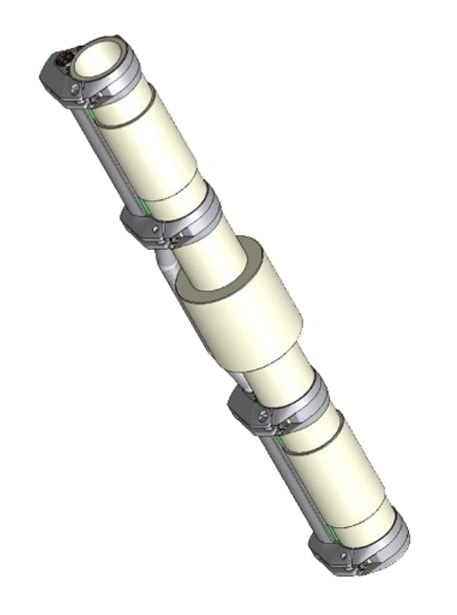
Cross coupling protectors are essential tools used in the oil and gas industry during the installation of completions in oil and gas wells. These protectors provide a variety of benefits that make them a necessary investment for any oil and gas company. Protects Control Lines: Cross coupling protectors help protect control lines from damage that can be caused by the installation process, environmental factors, and other external factors. By providing an extra layer of protection, the control line can last longer and reduce the need for costly repairs or replacements. Prevents Fluid Contamination in Cables: Cross coupling protectors prevent fluid contamination by keeping debris and other unwanted materials out of electrical cables during installation. This is particularly important in the oil and gas industry where contamination can lead to significant safety risks, equipment damage, and production losses. Reduces Maintenance Costs: The installation of cross coupling protectors can help reduce maintenance costs. By protecting control lines and cables the completion is less likely to require maintenance or repair. This can result in significant cost savings over the long-term. Improves Efficiency: Cross coupling protectors help to improve the efficiency of the installation process. By providing a secure connection and preventing contamination, the installation process can be completed more quickly and with fewer re-work. This can help to reduce downtime and increase productivity. Enhances Safety: Cross coupling protectors enhance safety by reducing the risk of equipment failure and fluid contamination. This can help to prevent accidents and injuries, and ensure that the installation process is completed safely. The use of cross coupling protectors is critical to the successful installation of tubing in oil wells. They provide numerous benefits including protecting tubing joints, preventing fluid contamination, reducing maintenance costs, improving efficiency, and enhancing safety. By investing in cross coupling protectors, oil and gas operators can ensure the long-term success of their operations while improving their bottom line. View Details
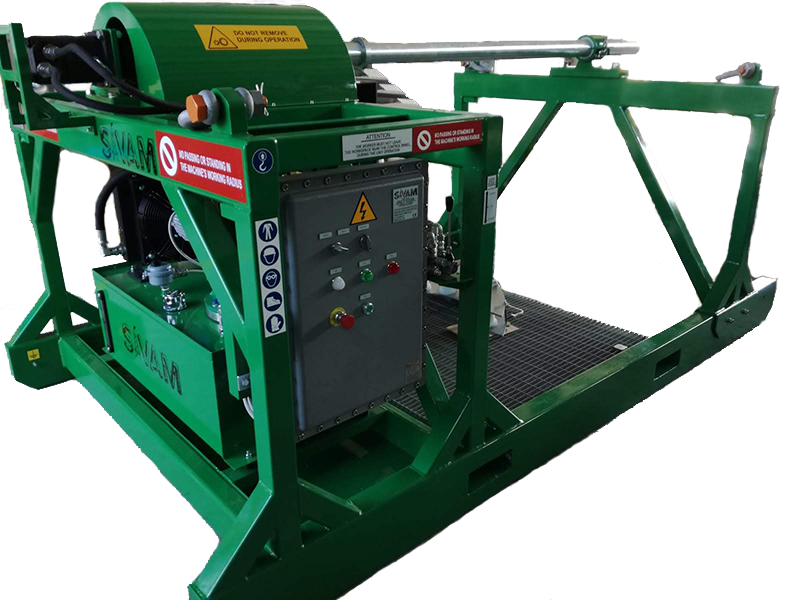
Spooling units designed to ensure cables or control lines are kept in tension while running in or out of hole. Our spooling units are fully designed, manufactured and assembled with sheaves (half or full moon) to guide control, injection, or mono-conductor cable preventing damage while being tripped in hole. Units are available in pneumatic, hydraulic, or electric drive and are ATEX zone and DNV certified as required by location. Spooling units can also be equipped with a filling pump to monitor pressure while tripping – improving efficiency as a sudden pressure drop indicates line damage. View Details
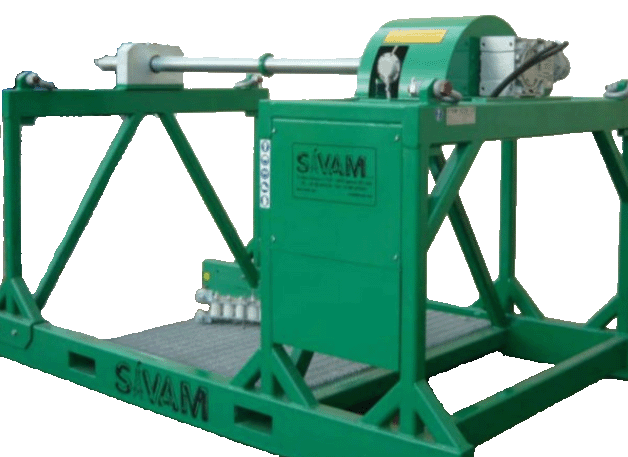
Spooling units designed to ensure cables or control lines are kept in tension while running in or out of hole. Our spooling units are fully designed, manufactured and assembled with sheaves (half or full moon) to guide control, injection, or mono-conductor cable preventing damage while being tripped in hole. Units are available in pneumatic, hydraulic, or electric drive and are ATEX zone and DNV certified as required by location. Spooling units can also be equipped with a filling pump to monitor pressure while tripping – improving efficiency as a sudden pressure drop indicates line damage. View Details
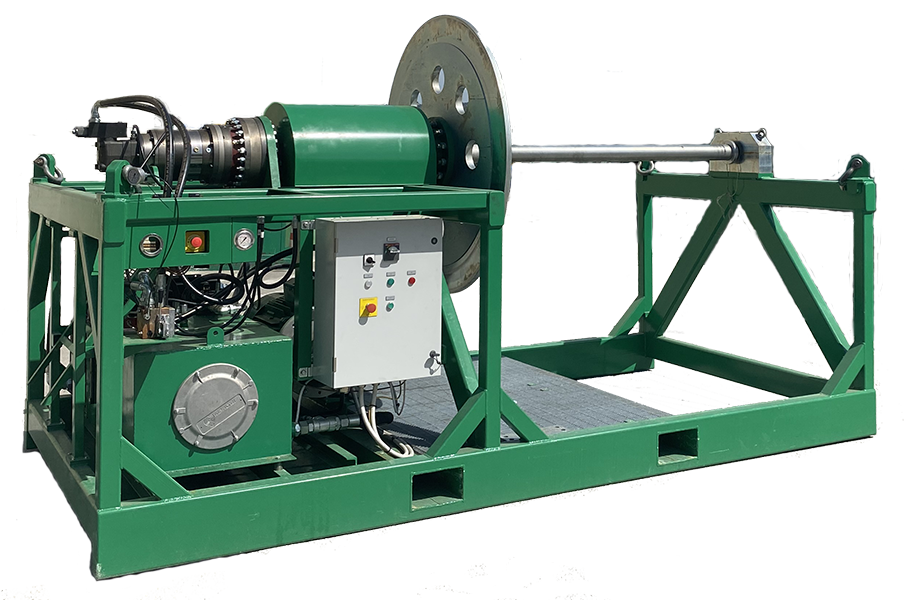
The Super Spooler SUHT-25-2415 is designed for the heaviest of spooling loads in the most adverse conditions. Spooling units designed to ensure cables or control lines are kept in tension while running in or out of hole. Our spooling units are fully designed, manufactured and assembled with sheaves (half or full moon) to guide control, injection, or mono-conductor cable preventing damage while being tripped in hole. Units are available in pneumatic, hydraulic, or electric drive and are ATEX zone and DNV certified as required by location. Spooling units can also be equipped with a filling pump to monitor pressure while tripping – improving efficiency as a sudden pressure drop indicates line damage. View Details
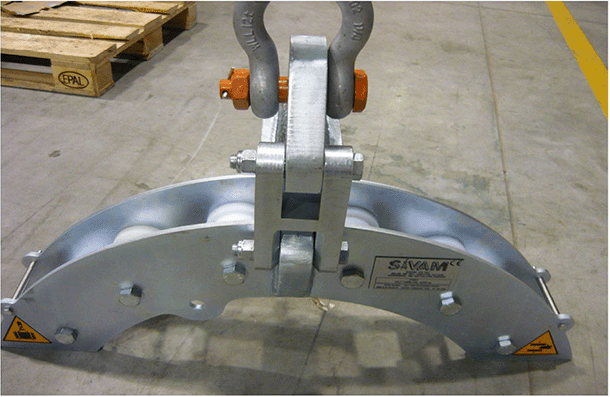
Half moon sheaves are designed to be used in conjunction with Sivam spooling units. Spooling units designed to ensure cables or control lines are kept in tension while running in or out of hole. Our spooling units are fully designed, manufactured and assembled with sheaves (half or full moon) to guide control, injection, or mono-conductor cable preventing damage while being tripped in hole. Units are available in pneumatic, hydraulic, or electric drive and are ATEX zone and DNV certified as required by location. Spooling units can also be equipped with a filling pump to monitor pressure while tripping – improving efficiency as a sudden pressure drop indicates line damage. View Details
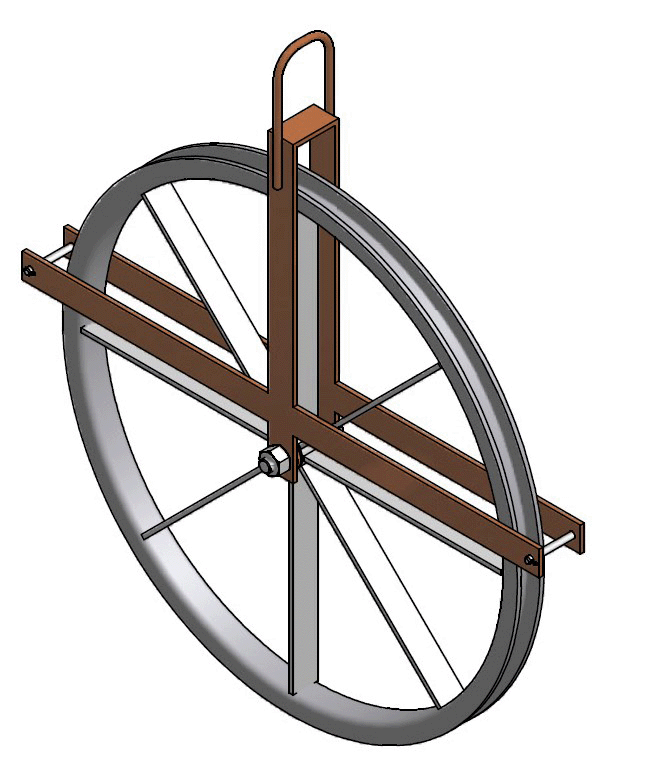
Full moon sheaves are designed to be used in conjunction with Sivam spooling units. Spooling units designed to ensure cables or control lines are kept in tension while running in or out of hole. Our spooling units are fully designed, manufactured and assembled with sheaves (half or full moon) to guide control, injection, or mono-conductor cable preventing damage while being tripped in hole. Units are available in pneumatic, hydraulic, or electric drive and are ATEX zone and DNV certified as required by location. Spooling units can also be equipped with a filling pump to monitor pressure while tripping – improving efficiency as a sudden pressure drop indicates line damage. View Details
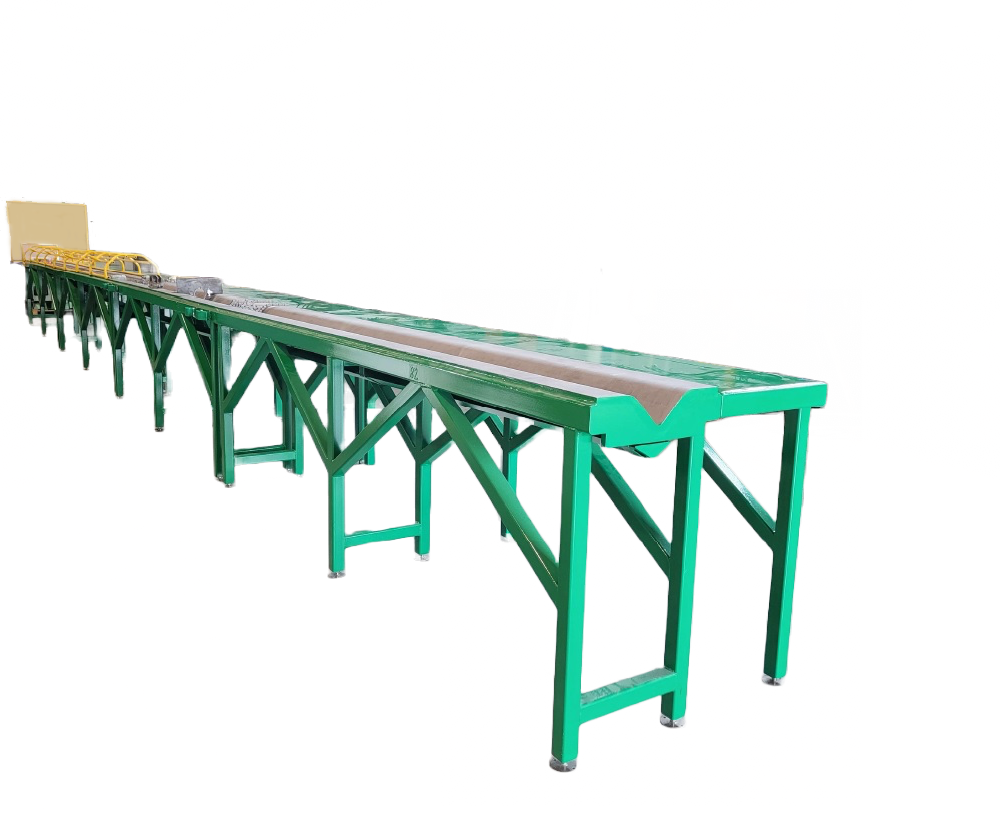
Are you in need of a high-quality disassembly bench for the teardown and inspection of electric submersible pumps? Look no further than Sivam! We're proud to offer a range of disassembly benches that are specifically designed for the inspection and maintenance of ESP's. Our benches are built from the highest quality materials and are engineered to provide exceptional durability and reliability, ensuring that your team can work safely and efficiently. At Sivam, we understand the importance of precision and accuracy when it comes to maintaining critical equipment like ESP's. That's why our disassembly benches are designed to provide a stable and secure platform for teardown and inspection, with features like adjustable height for a level working surface to ensure maximum convenience and ease of use. But that's not all - our disassembly benches also come equipped with a range of additional features to help your team work more efficiently. From built-in cages to customizable work surfaces, our benches are designed with your team's needs in mind. At Sivam, we're committed to providing our customers with the highest level of quality and customer service. That's why we work closely with our clients to understand their specific needs and design benches that meet their exact specifications. So if you're in need of a high-quality disassembly bench for the inspection and maintenance of ESP's, choose Sivam. Contact us today to learn more about our products and services and to find out how we can help take your operations to the next level! View Details
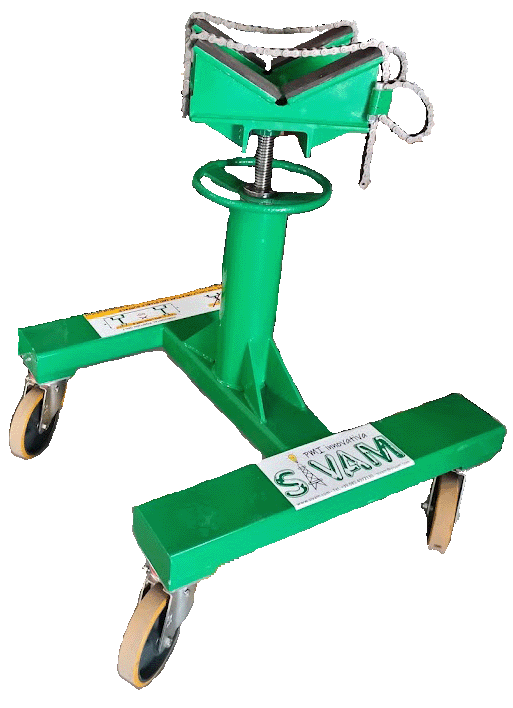
Are you tired of searching for the perfect ESP stand for the inspection and maintenance of your electric submersible pumps? Look no further than Sivam! We specialize in providing high-quality ESP stands that are specifically designed to meet the needs of your team. Our ESP stands are built using only the highest quality materials, ensuring exceptional durability and reliability. At Sivam, we understand the importance of precision and accuracy in the maintenance of critical equipment like ESP's, which is why our stands are designed to provide a stable and secure platform for teardown and inspection. We know that convenience and ease of use are important factors when it comes to selecting an ESP stand, which is why we offer adjustable height options to ensure a level working surface. Our stands are also equipped with a range of additional features to help your team work more efficiently, so you can get the job done quickly and effectively. At Sivam, we pride ourselves on providing exceptional customer service. We work closely with our clients to understand their specific needs and design benches that meet their exact specifications. Our commitment to quality and customer satisfaction is unmatched, so you can trust us to deliver the best products and services for your business. Choose Sivam for all your ESP stand needs and take your operations to the next level. Contact us today to learn more about our products and services and see how we can help you get the job done right! View Details
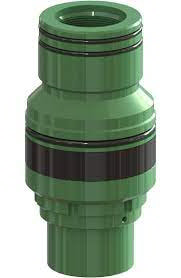
Tubing hangers form part of the primary well barrier while holding the tubing string in place. The tubing hanger is screwed to the top joint of tubing (or pup-joints as required for space out), and is landed in the casing flange (in compression or tension depending on the wellhead assembly) with the elastomeric seals preventing communication between the tubing and A-annulus. Our tubing hangers come in a variety of sizes and specifications for various wellhead manufacturers including Cameron, FMC, Stream-Flo, ABB, Vetco-Gray, and Barbour systems to name a few. We stock inventory from vintage systems, as well as modifying hangers for additional feed-throughs for control lines, electric feed-thru, or downhole fiber-optic as required. View Details
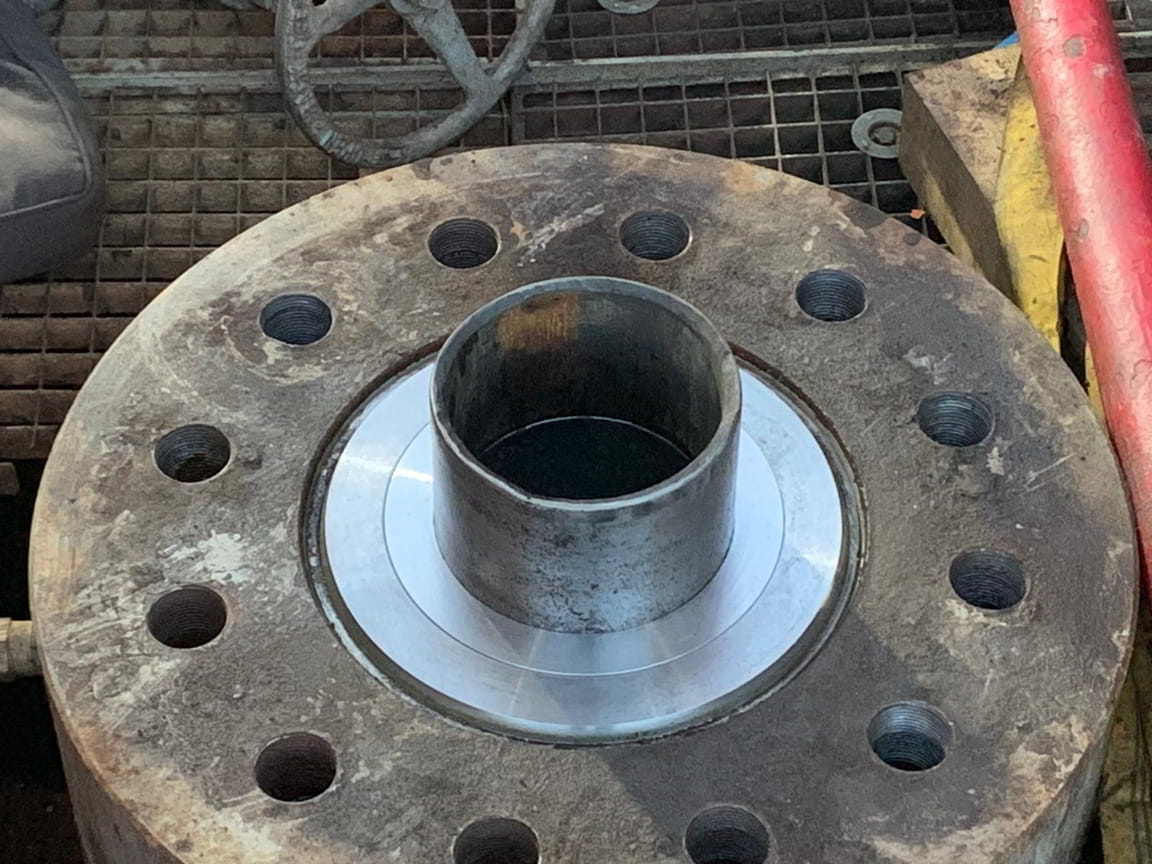
Tubing hangers form part of the primary well barrier while holding the tubing string in place. The tubing hanger is screwed to the top joint of tubing (or pup-joints as required for space out), and is landed in the casing flange (in compression or tension depending on the wellhead assembly) with the elastomeric seals preventing communication between the tubing and A-annulus. Our tubing hangers come in a variety of sizes and specifications for various wellhead manufacturers including Cameron, FMC, Stream-Flo, ABB, Vetco-Gray, and Barbour systems to name a few. We stock inventory from vintage systems, as well as modifying hangers for additional feed-throughs for control lines, electric feed-thru, or downhole fiber-optic as required. View Details
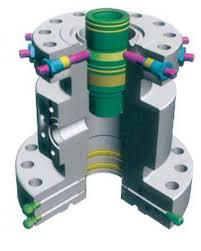
Tubing hangers form part of the primary well barrier while holding the tubing string in place. The tubing hanger is screwed to the top joint of tubing (or pup-joints as required for space out), and is landed in the casing flange (in compression or tension depending on the wellhead assembly) with the elastomeric seals preventing communication between the tubing and A-annulus. Our tubing hangers come in a variety of sizes and specifications for various wellhead manufacturers including Cameron, FMC, Stream-Flo, ABB, Vetco-Gray, and Barbour systems to name a few. We stock inventory from vintage systems, as well as modifying hangers for additional feed-throughs for control lines, electric feed-thru, or downhole fiber-optic as required. View Details
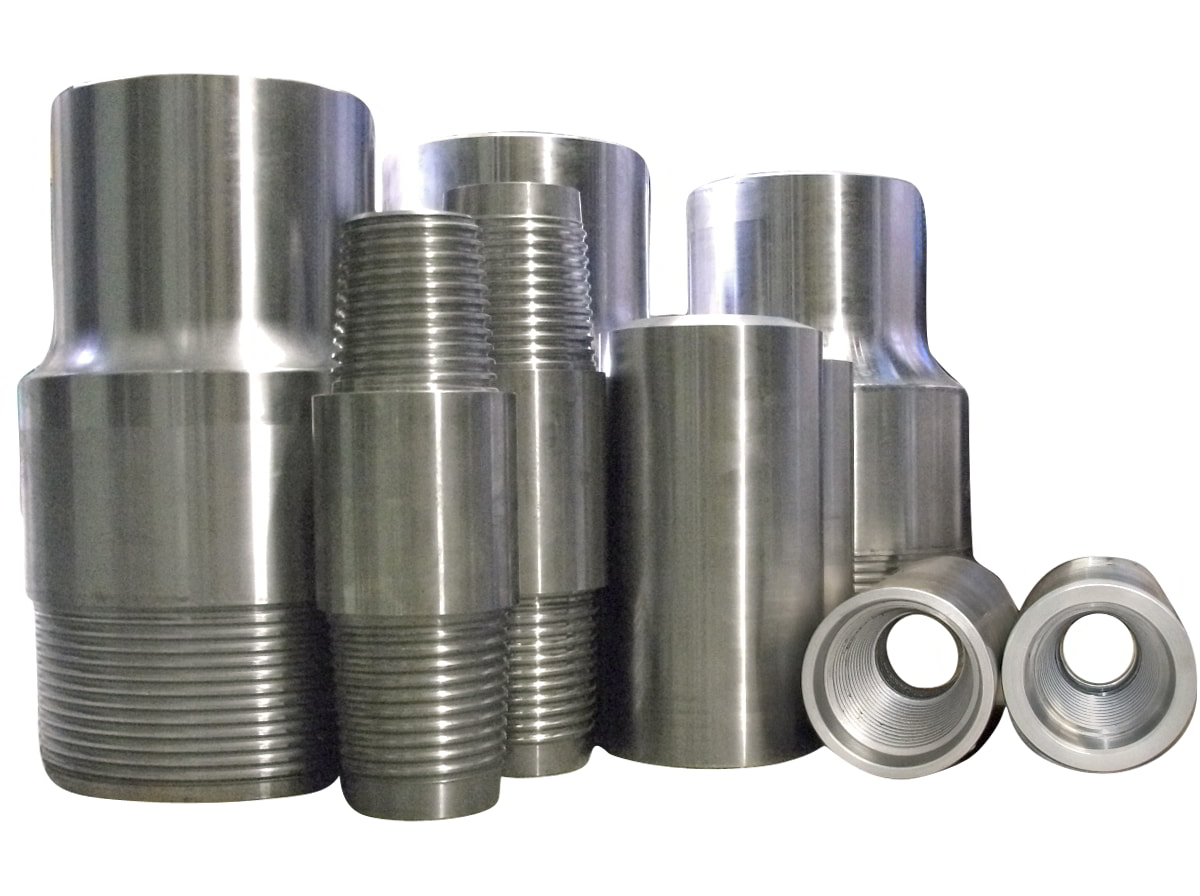
Seamless pup joints with premium connections are available in API and exotic alloy grades. Premium ends are threaded by the manufacturer or authorized licensee. A crossover is a one piece tubular section used to join or change two different components with different size of tube, or type of connection. View Details
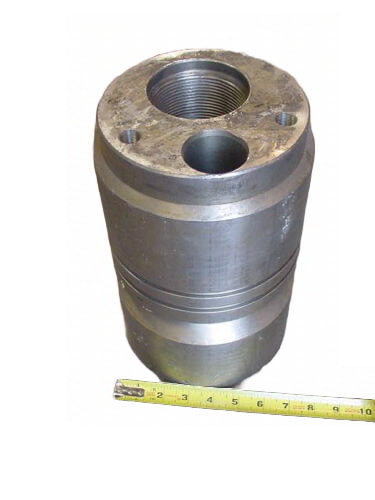
The tubing hanger holds a feed-through mandrel equipped with the proper seals. Feed-through mandrel seals contain well pressure and prevent gas leaks at the surface. Power cables are connected to the two ends of this device via their three-phase connectors (also called: lower and upper pigtails). The feedthru portion of the system provides a fluid block at the wellhead permitting electrical power to pass safely and reliably through the well’s pressure barrier. The connector works with the wellhead manufacturer to assure proper fit and material compatibility. View Details
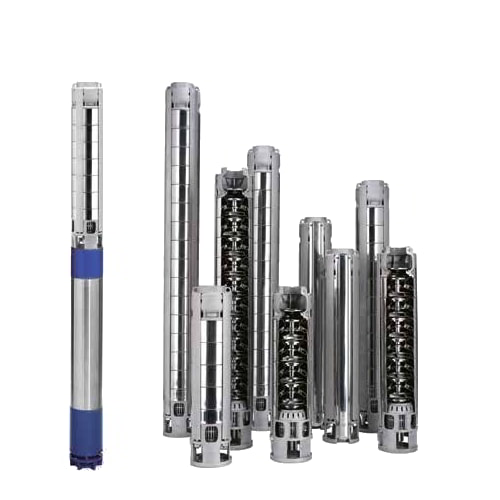
The electrical submersible pump is an efficient and reliable artificial-lift method for lifting moderate to high volumes of fluids from wellbores with volumes rates from 150 B/D to as much as 150,000 B/D (24 to 24,600 m3/d). A complete ESP system can be designed and supplied to meet the requirements from individual wells. The ESP system is comprised of; intake, pump, motor, seal section, cable, feed-through, surface electrical and any sensors, software and variable frequency drives (VFD's). ESP's can be used onshore, offshore, subsea, or in relatively high gas saturations. View Details
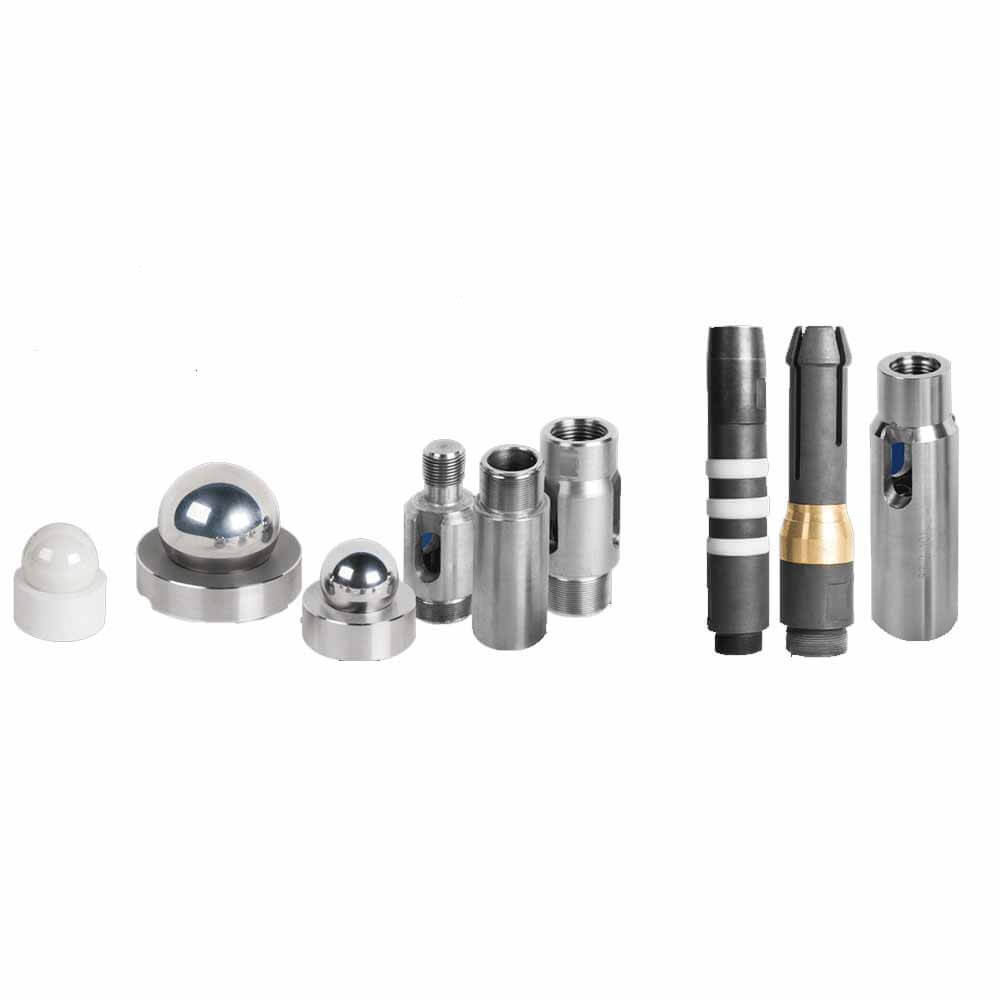
Sucker rod pumping systems are the oldest and most widely used type of artificial lifting system for oil wells. Sucker-rod pumping is the most widely used artificial lift method for onshore oil wells. Sucker-rod strings transfer the motion from the driving machine on the wellhead to the downhole oil pump. Pump diagnoses are generally conducted through an interpretation of the pump dynamometer graph (pump card). View Details
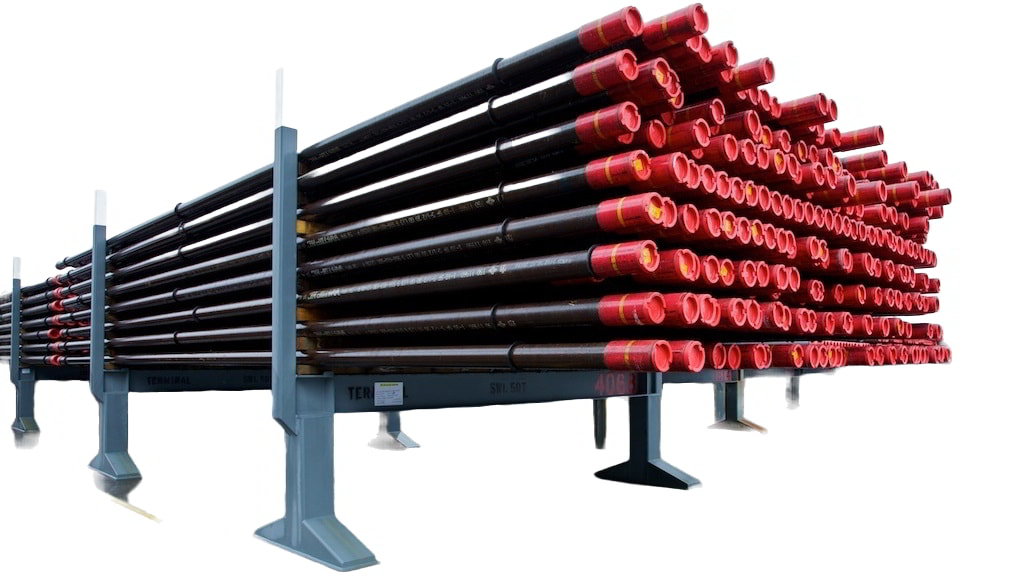
OCTG (Oil Country Tubular Goods) refers to the piping products that are used in oil and gas production and drilling activities. OCTG pipe normally is manufactured based on API specifications. Oil country tubular goods (OCTG) is a family of seamless rolled products consisting of drill pipe, casing and tubing subjected to loading conditions according to their specific application. Tubing is the pipe placed in the well that is exposed to flowing fluids from the reservoir to surface. It is uncemented and able to pulled and replaced in the event the pipe erodes or corrodes. Our international network of manufacturers and warehouses have almost all weights and grades in stock. View Details
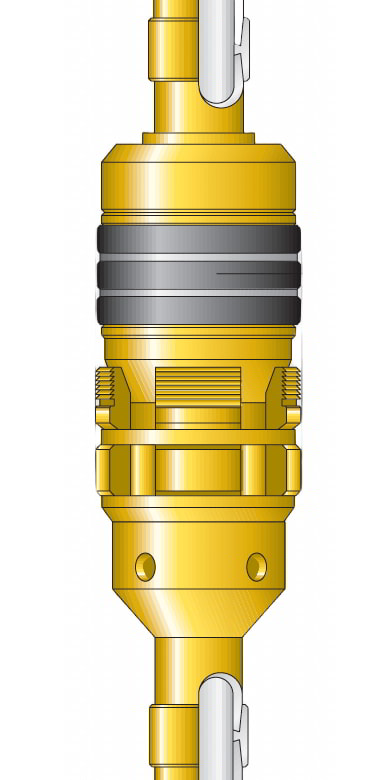
The R-3™ packer is a versatile production packer intended for a broad range of production applications. It is a compression-set packer, suitable for stimulation and treating applications in a double-grip configuration. Applications in which excessive bottomhole pressures have been depleted, a single-grip version can be used as an economical production packer. The R-3 single-grip retrievable-casing packer is set with one-fourth-turn right-hand rotation and can be released with straight pickup. We can source from current stock or direct from the manufacturer. View Details
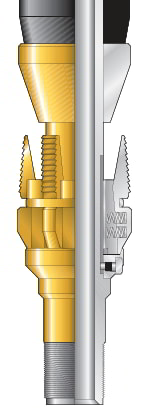
The G™ packer is an economical, compression-set packer, intended for lower pressure production applications. It is set by one-quarter-turn right-hand rotation. Release is accomplished by straight pickup of the tubing. If it is necessary to move the packer further downhole after release, one-fourth-turn left-hand rotation will put the tool back into the running position. C-1 Single Grip Invertible Packer The C-1™ packer can be run as a conventionally set packer or, when run upside down, it can be set in compression. Emergency releases are provided for tension and compression operations. View Details
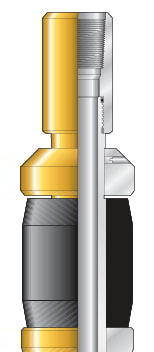
The C-1™ packer can be run as a conventionally set packer or, when run upside down, it can be set in compression. Emergency releases are provided for tension and compression operations. The G™ packer is an economical, compression-set packer, intended for lower pressure production applications. It is set by one-quarter-turn right-hand rotation. Release is accomplished by straight pickup of the tubing. If it is necessary to move the packer further downhole after release, one-fourth-turn left-hand rotation will put the tool back into the running position. View Details
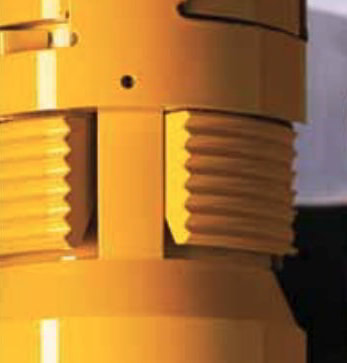
The AD-1™ tension packer is a compact, economical, retrievable packer. Primarily used in waterlood applications, it can also be used for production, treating operations, and when a set-down packer is impractical. And because the AD-1 is tension-set, it is ideally suited for shallow wells where set-down weight is not available. The ADL-1™ tension packer is a large-bore version of the AD-1 and offers the same features and beneits; running and retrieving operations are also the same. We can source from current stock or direct from the manufacturer. View Details
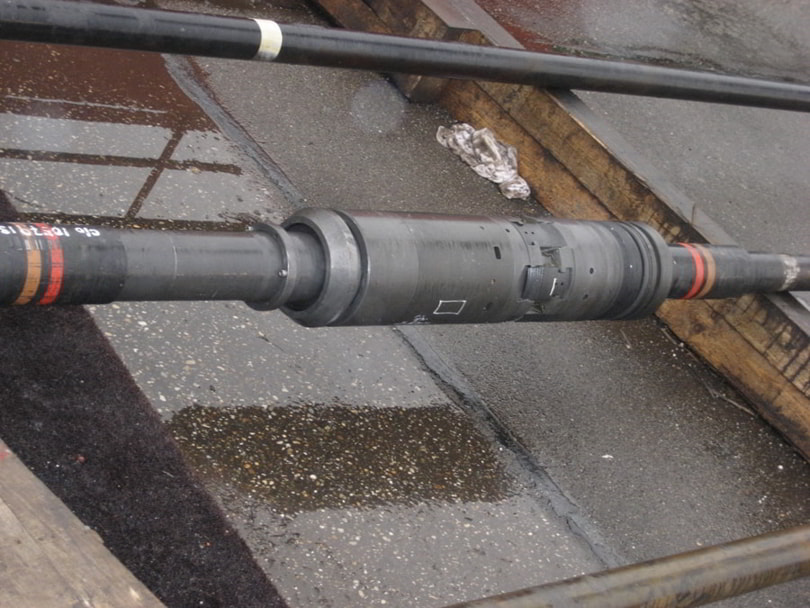
The A-3™ LOK-SET™ packer combines advantages of a retrievable packer with the features of a permanent packer. An ability to lock down tubing forces makes the A-3 suitable for a broad range of applications, including production, injection, zone isolation, and remedial operations. The AL-2™ LOK-SET packer is similar to the A-3, and has a larger bore. To provide a simple and reliable injection system for retrieving an injection string without having to unseat the packer: L-10 or L-316 on-off sealing connectors, Product Family Nos. H68420 andH68422. Baker Hughes blanking plug can be used in the seating nipple proile ofthe on-off sealing connector to provide a means of plugging the lower zone whilethe tubing is being pulled. We can source from current stock or direct from the manufacturer. View Details
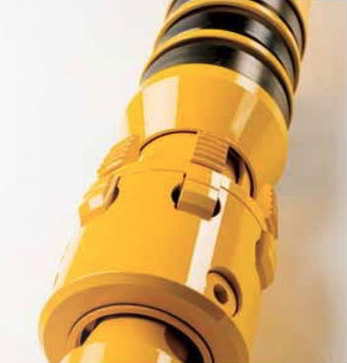
The mechanically set HORNET™ packer offers ease of operation with quarter-turn right to set and release. Converting it for wireline-setting applications is simple and inexpensive. The HORNET packer provides for landing in compression, tension, or neutral positions. Every component from the jay track, to the internal bypass, to the packing-element system and the upper slip assembly has been developed to ensure the HORNET’s setting and releasing reliability. The HORNET EL packer is run and set on electric line using an E-4™ (Product Family No. H43702) with a slow-set power charge or a J™ setting tool (Product Family No. H41371) and a special wireline adapter kit. An L-10™ type on/off seal nipple is run on top of the packer to connect the tubing to the packer and to house a blanking plug when the packer is used as a temporary bridge plug. We can source from current stock or direct from the manufacturer. View Details
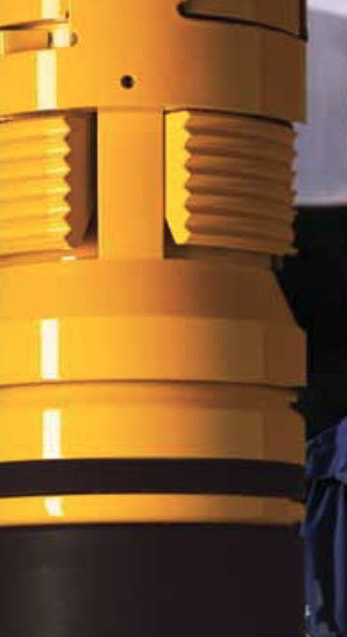
Baker Hughes introduces the SABRE™ mechanical-set retrievable packer. This packer is a single-string retrievable packer based on the proven performance and reliability of the Hornet packer. It is especially designed to perform reliably in standard-pressure injection and production applications. It is a tension set or compression set and can be landed in compression, tension, or a neutral condition. The SABRE provides reliable performance in a retrievable packer under combined conditions of 250°F (121.1°C) and 7,000 psi (482.6 bar) differential above or below the packer. We can source from current stock or direct from the manufacturer. View Details
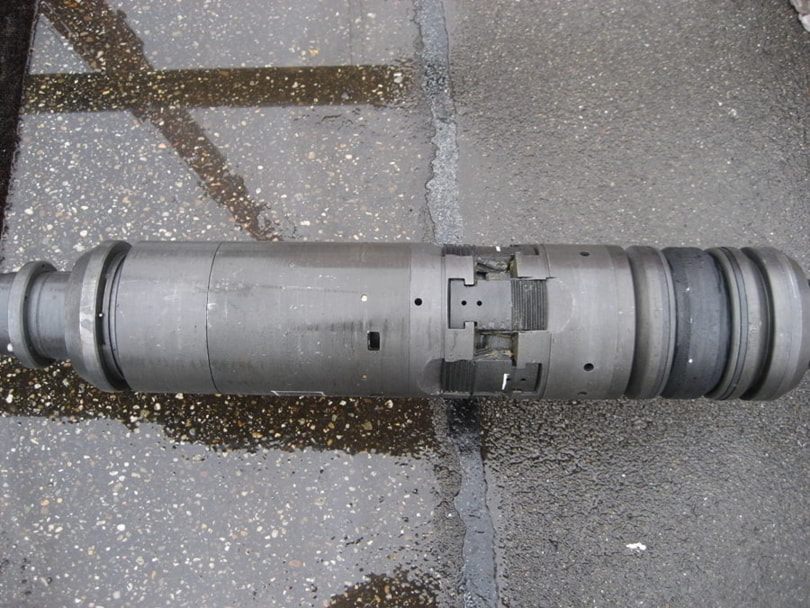
The HS™ is setting the standard for high-performance, single-string retrievable, hydraulic-set shear-release packers. Its simple and reliable design provides maximum pre-set prevention while running and has improved sealing and retrieving reliability, metallurgy and elastomer selections it for the well environment. Other applications include: production, injection and zonal isolation; single-string selective completions or dual-string completions with multiple packers; completions that require pre-set prevention while running; deviated wells or other applications when rotation for installation or removal is not beneicial; when it is beneicial to displace and set packers after the well is langed up. The HS-S™ is beneicial when testing the tubing string before packer setting or to independently set and test individual packers in multiple-packer completions and stacked packer applications. The HS-S is the selective-set version of the HS hydraulic-set single-string packer. Setting and retrieval is the same as the HS with the exception of an inner sleeve that must be shifted mechanically before the packer will set. The selective-setting mechanism prevents the packer from premature setting when high tubing-to annulus pressure differences are encountered or when tubing- pressure tests are performed. Accessories A tubing-plugging device must be positioned below the packer for actuation: E™ hydraulic-trip sub (Product Family No. H79928); CMU(D)™ sliding sleeve (Product Family Nos. H81079 and H81080) with blanking plug; low-control seating nipple with blanking plug; hydraulic-setting devices (Product Family Nos. H46921, H79928 and H75917) View Details
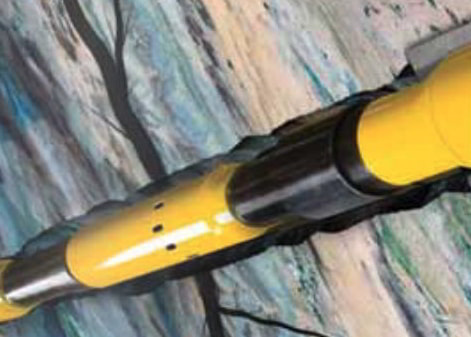
The FH™ is the industry-standard, hydrostatic-set and shear-release single-string retrievable packer. It can be used in the following applications: production, injection, and zonal isolation; single-string selective completions or dual-string completions with multiple packers; deviated wells or other applications when rotation for installation or removal is not beneficial; when it is beneficial to displace and set packers after the well is flanged up; when testing the tubing string before packer setting or to independently set and test individual packers in multiple packer completions is beneficial. The FH packer is hydraulically activated by applying tubing pressure against a plugging device below the packer. The packer requires only straight pull to release. The FHL™ is the large-bore version of the FH packer. Features, advantages and operational procedures are the same as those for the FH packers Accessories A tubing-plugging device must be positioned below the packer for actuation: E™ hydraulic-trip sub (Product Family No. H79928); CMU(D)™ sliding sleeve (Product Family Nos. H81079 and H81080) with blanking plug; Baker Hughes low-control seating nipple with blanking plug; hydraulic-setting devices (Product Family Nos. H46921, H79928 and H75917) View Details